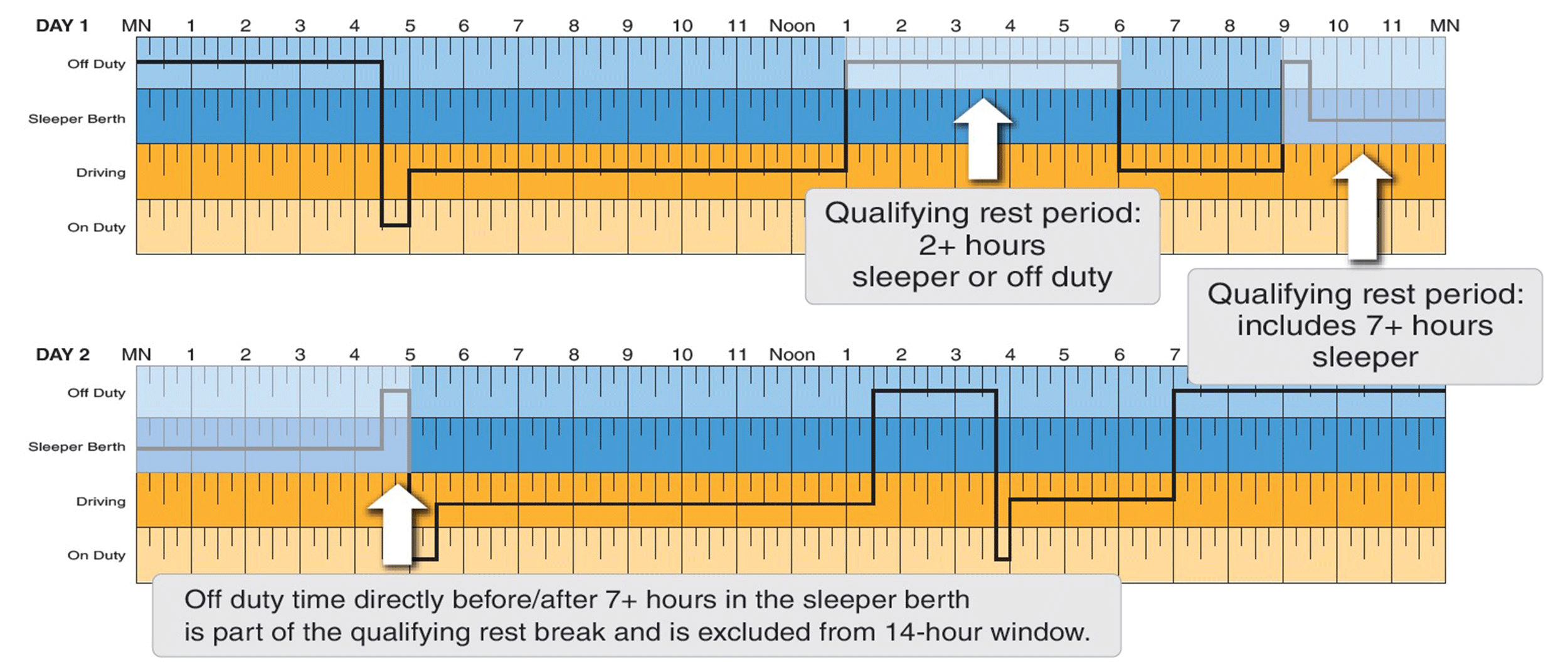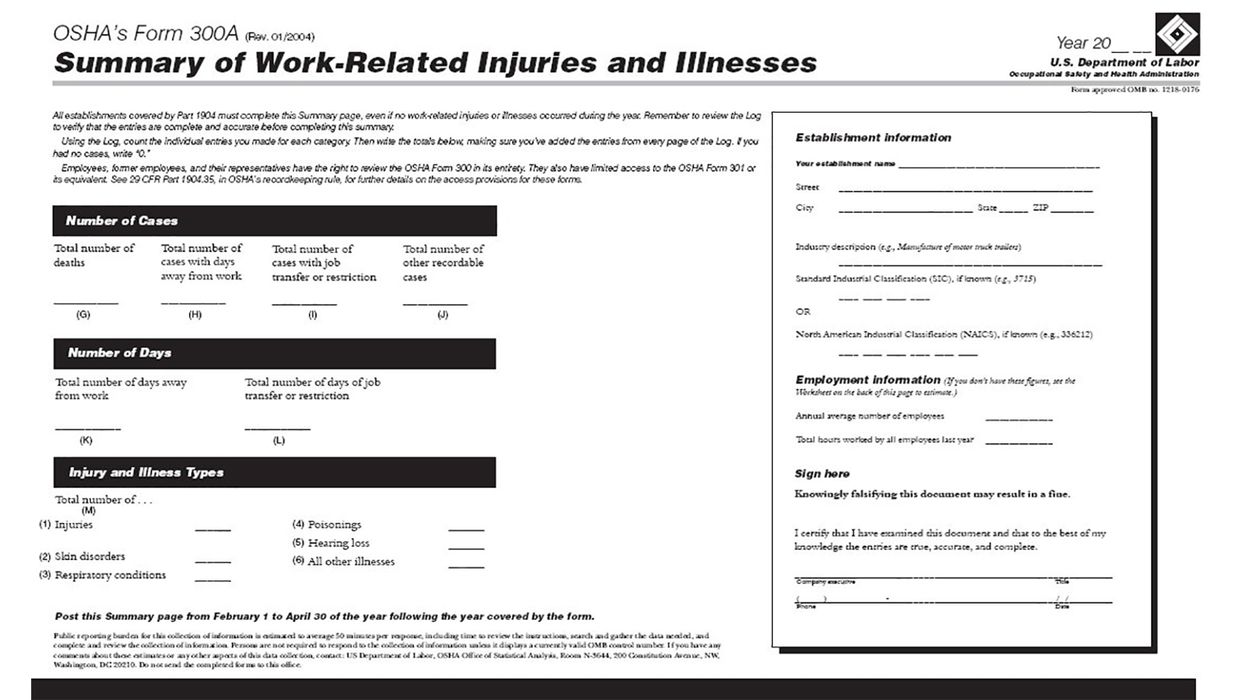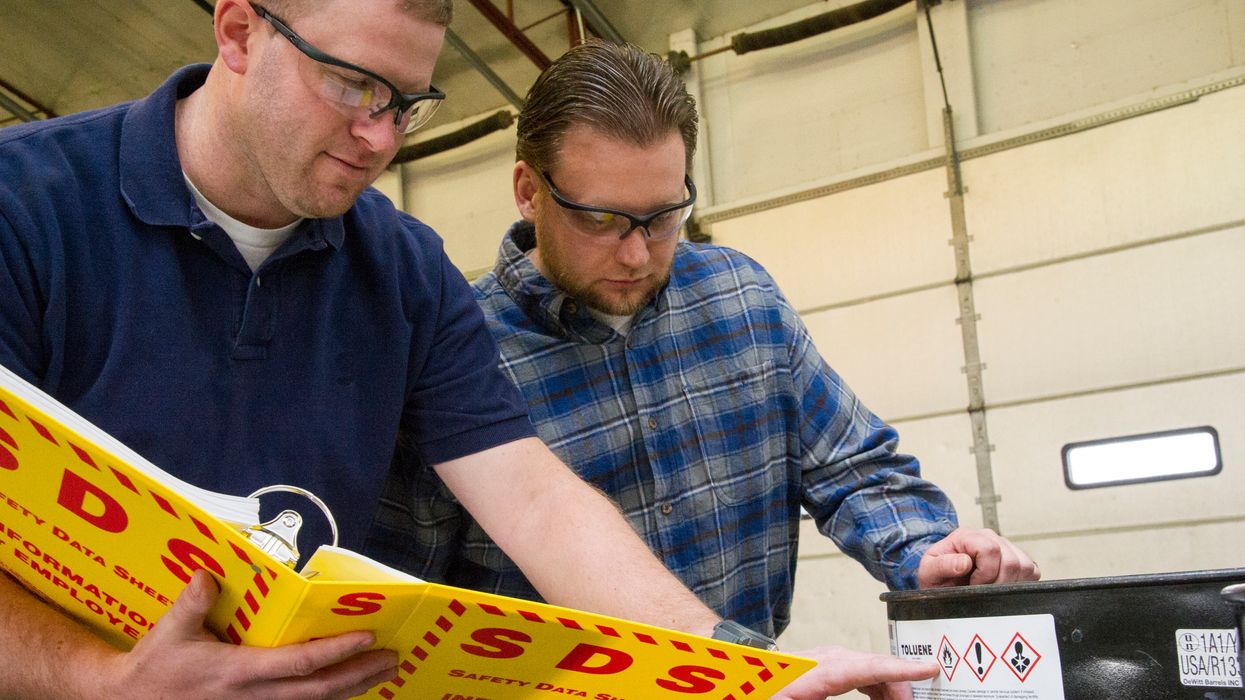Exclude ‘adjacent’ off-duty time from 14-hour limit, DOT says
Truck drivers who “pause” the 14-hour limit by spending at least seven hours in a sleeper berth can also exclude adjacent off-duty time, according to new FMCSA guidance.
The agency says off-duty time tacked onto either side of the sleeper-berth time may be considered a continuation of the break and therefore doesn’t count against the driver’s 14-hour allowance.
Splitting the break
The new guidance affects compliance with the “split break” option described in 49 CFR 395.1(g)(1)(ii). The rule allows drivers to split their 10-hour breaks into two separate breaks, with driving or on-duty time in between, as long as:
- One break is at least seven consecutive hours in a sleeper berth,
- The other break is at least two hours spent off duty and/or in a sleeper berth, and
- The two breaks combined add up to at least 10 hours.
Driving time in the period before and after each of these two rest periods, when added together, may not exceed the 11-hour driving limit or the 14-hour duty limit. In this way, each qualifying break serves to “pause” the 14-hour calculation.
Adjacent time
The guidance comes into play when a driver logs time “off duty” immediately before or after the seven-or-more-hour sleeper-berth period. A strict reading of the regulations might suggest that such time must be counted against the 14-hour period if the total break is less than 10 consecutive hours.
However, the FMCSA says such off-duty time may be excluded from the 14-hour calculation, the same as the sleeper-berth time.
The following example shows how this works:

In this example, the driver obtained the two necessary rest breaks to qualify for the split-sleeper option, with one being five hours off duty and the other being seven hours in a sleeper berth. According to FMCSA guidance, the 30 minutes spent off duty before and after the sleeper-berth period, in addition to the seven hours spent in the berth, are excluded from the 14-hour count.
Note that on Day 1 in this example, the five-hour off-duty break serves to pause the 14-hour clock. Once the driver obtained the second qualifying break (at 5:00 AM on Day 2), the 14-hour count started fresh at 6:00 PM on Day 1, the end of the first break, and the driver remained in compliance.
If you have drivers who split their breaks, be sure they understand how adjacent off-duty time factors into their hours-of-service calculations.
Key to remember: New guidance says off-duty time adjacent to a qualifying sleeper-berth break may be excluded from the driver’s 14-hour calculation.


















































